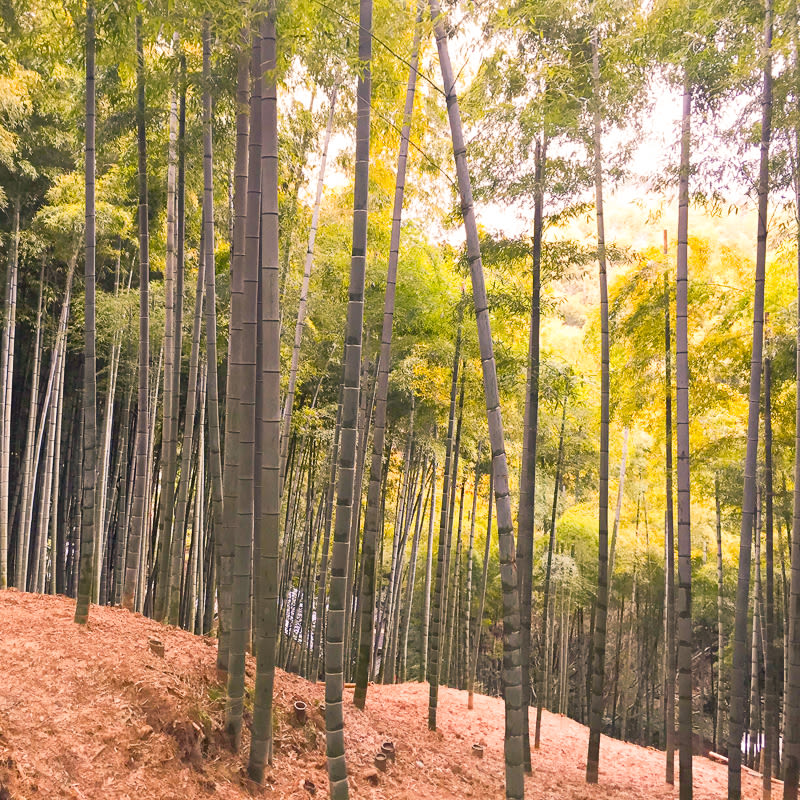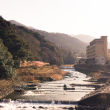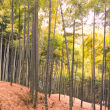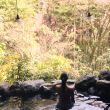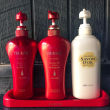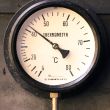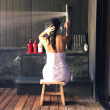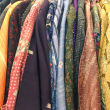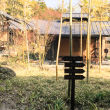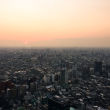Dear ITG,
When I arrived in Tokyo, I expected a few things: the metro to be punctual (it is), the street signs to sing (they do), and the puppies, food, and apartments to be miniature (they are). What I didn't expect to learn about this city was how easy it is to escape it—even just for a day. After flying 25 hours to spend two weeks in Japan, I came to a surprising realization: The best thing aboutcoming to Tokyo is leaving Tokyo.
I woke up in Shinjuku—a noisy, colorful prefecture of the city. But an 85-minute train ride and a bento box later, I found myself in the heart of a peaceful town called Hakone. (Hakone is to Tokyo what the Catskills are to Manhattan.) The charming forest village lives on a clear water river—which makes it a destination spot for hot spring goers.
I'll admit, before I visited the hot springs, known in Japan as “onsens,” I wasn't sold on spending perfectly good Yen to get naked and prune up in hot water in the middle of the woods. But locals kept saying things like “it’s tradition” and “it will help you live longer,” and with selling points like that, I figured why not? By 12pm on the day of my trip, I was happily soaking in a private, open-air bath on the terrace of Hakone Yuryo, which overlooks the green mountains and the nearby river.
There are thousands of onsens in Japan, each with different healing properties, at various heats and with an array of colors (red, brown, white, blue). In Hakone, I visited the Sulphur Springs, also known as “Simple Springs,” which have colorless, odorless waters (ideal for first-timers like myself) that have been known to help clarify and hydrate your complexion for hours, if not days. The water temperature can vary from nearly 211 degrees fahrenheit to as cool as 68 degrees fahrenheit. I soaked in 107 degrees, which is generally considered mild. But the higher the heat, I was told, the more effective it is for relieving sore muscles, healing bruises, and stimulating your metabolism. The latter may or may not explain my miraculous tolerance for consuming embarrassing amounts of mochi ice cream and green tea Kit Kats…
When my time at the onsen was up, I felt like I had just finished a hot yoga class—I was both obscenely relaxed and exhausted in the same breath. It’s shocking how strenuous it is to sit still in hot water. It actually takes a lot of concentration, and a lot of deep breathing to stay in for more than a few minutes at a time. My skin felt even and dewy, and my body was telling me it was already addicted to the hot-spring high. Bathing in the onsen is just one of the many secrets to preserving beauty like the Japanese do— naturally. And if my trip to the Hakone taught me anything, it's how powerful it is to relax.
A few important things to know before you take the plunge:
-
Get ready to get naked. Don't bother bringing a bathing suit—they’re banned. Male and female public baths are separated—but if you rent a private room (which I did), then you're free to soak in the hot springs, shower outside, and lounge privately (or with a friend, lover, whatever).
-
They hate tattoos. This even includes “sticker tattoos,” which I assume means, any and all temporary ink. Onsen facilities will ask you when you check in if you have any. I have a tiny one on my wrist, which can pass as a set of freckles, so I opted to lie. “No, I don't have any tattoos,” I managed with a straight face. “Good,” the spa attendant said with an even straighter face. If you do have noticeable tattoos, it would be wise to reserve a private onsen for an hour or two rather than brave the public baths.
-
Hydrate! Bring water with you, or be prepared to buy a bottle. The heat and the salt in the water will really leave you a bit lightheaded at first.
-
Post-onsen ritual: Wash your hair in the open air shower afterward to cleanse your hair of any sulfuric acid or salt that will dry it out (they provided Shiseido Tsubaki Shining Shampoo and Conditioner, which was a dream), then put on a kimono, and drink a cup of tea on the deck.
I arrived back at Tokyo Station by 5pm, just in time to meet some friends for dinner. I hardly noticed the chaos of the city around me, and I looked flushed and happy. My escapist day in the mountains of Japan felt like a lucid dream—one of those dreams where I feel more invincible than I actually am.
xxAlyssa
Photos courtesy of Alyssa Reeder.

